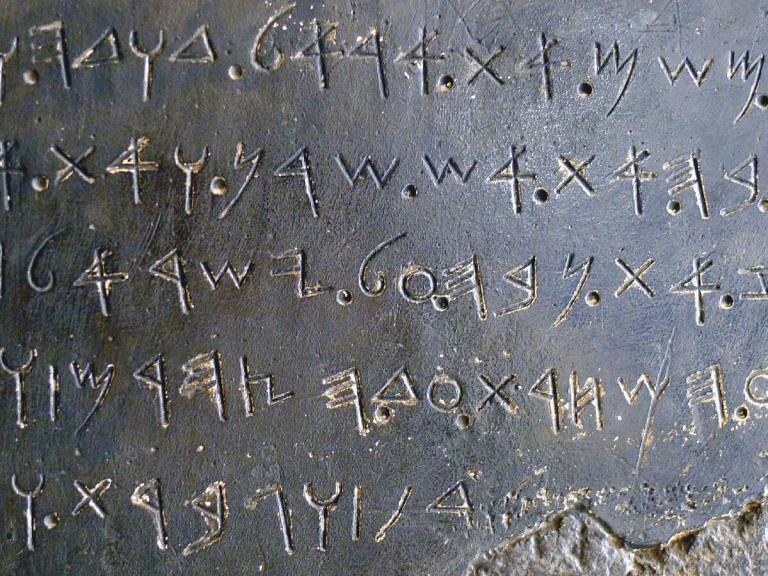
Researchers have confirmed that the Mesha Stele, also known as the Moabite Stone, contains references to King David of the Bible. The stele is a basalt stone slab that was discovered originally in 1868, east of the Dead Sea. A missionary named F.A. Klein had found the stone, which piqued the interest of scholar Charles Clemont-Ganneau, who sent two men to investigate the stone. The first man-made a paper copy of the stone, however, the second man caused some sort of issue with the villagers where the stone was found, causing the stone to be smashed. Clemont-Ganneau purchased the stone and fragments and reconstructed it. It now rests at the Louvre Museum in Paris.
The stone is written in the Moabite language, similar to Hebrew, with some dialectal differences. The Moabites lived in the land of Moab, which is now modern Jordan and are mentioned in the Bible as having an antagonistic relationship with the Israelites. The stone is written from the perspective of King Mesha of Moab, who reigned during the late 9th century BC. On the tablet, Mesha first mentions defeating ancient Israel and the rebuilding that followed after. In detailing the conflict, the text mentions “YHWH,” the Hebrew name for God. The text also appeared to refer to the “house of David” and the “altar of David.” That, however, has only been recently confirmed due to the fact that part of the inscription was unclear.
An article in Biblical Archaeology Review revealed in 2015 that a team from West Semitic Research Project of the University of Southern California took digital pictures of both the stone and the paper copy. They then used a method called Reflectance Transformation Imaging (RTI), which takes the images from various angles and then creates a 3-D image. In 2018, the Louvre then took high-resolution photos of the paper, which enabled the researchers to make out the rest of the inscription with a higher degree of certainty.
The events detailed in the stone also coincide with the events of 2 Kings 3. In the Bible, Mesha is subdued during the reigns of King Omri, King Ahab, and King Joram. The stone mentions Omri by name and then refers to a “son of Omri,” most likely referring to Joram. The stone is just another example of history confirming events recorded in the Bible. In an op-ed for Newsweek, Eric Metaxas outlined the many ways archaeological finds have confirmed the Bible. The most dramatic corroboration he pointed out referred to the findings in a peer-reviewed paper in Nature Scientific Reports which detailed the destruction of a Middle Bronze Age city. The scientists used the information from the Bible in regards to the Biblical city of Sodom in order to locate the area and uncovered signs of such devastating destruction that it could only be described as a “cosmic airburst/impact event.” The destruction could have been greater than 1000 Hiroshima bombs. The paper concluded that whatever happened to the city must have been very similar to what was detailed in the Bible. With the apparent confirmation of David, it begs the question which Metaxas asks in the article: “whatever will they find next?”


